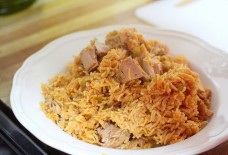Items Traded by the Ancient Arabs
By: Pamela Dimitrova/ Arab America Contributing Writer
From ancient times, trade has always been central to the Arab World, quickly turning them into one of the most important figures in the world’s ancient history. This began way back in time when small groups of Arab families settled in oases grew grain and vegetables and offered the passing nomadic members food for exchange of animals, meat and other things. The paths between these oases were the first ‘trade routes’, before they continued exploring new areas and skills, soon establishing the main ancient route between Africa and India, later reaching Europe. But what were the main items traded by the Arabs back then?
1. Incense
For thousands of years, incense has been burned in the Middle East. Over time, it made its way to the Egyptian, Greek, and Roman temples of Europe where it became part of pagan worship ceremonies.
Incense was not only burned before altars, it was also used as a deodorant, as well as for embalming. Embalming is believed to have originated among the Egyptians before 4000 BC, and was used by them for more than 30 centuries. Historic evidence demonstrates that embalming is religious in origin, conceived as a means of preparing the dead for the life after death. From the Egyptians, the practice of embalming spread to other ancient peoples, including the Assyrians, Jews, Persians, and Scythians.
2. Myrrh
Myrrh, a reddish-brown resinous material collected from the dried sap of certain trees, was a product traded along the Incense Route. The original myrrh species is Commiphora myrrha, which is native to Yemen, Somalia, and the eastern parts of Ethiopia. The related Commiphora gileadensis, native to Israel, Palestine and Jordan, is now accepted as an alternate source of myrrh.
Myrrh has been traditionally used by many cultures as a perfume, incense, medication, or embalming ointment. In addition to its pleasant scent, it also has antimicrobial properties. Myrrh originated from the Arabian Peninsula, where the gum resins were first collected. Its trade route reached Jerusalem and Egypt from modern Oman (then known as the Dhofar region) and Yemen, following the Red Sea coast of Arabia. Herodotus wrote in the 5th century BC, “Arabia is the only country which produces myrrh, frankincense, cassia and cinnamon.”
3. Aloe
The drug, bitter aloes, is obtained from the sap of the Aloe tree or shrub. There are more than 150 known species, most native to South Africa. Several species grow in Yemen and Oman, and these are thought to be the source of ancient aloes, which are often mentioned in the Bible. The bush has sword-shaped leaves that are tough, fleshy and often waxy and toothed. Today several species of aloes are commercially important as the source of the bitter-tasting aloes used in medicine.
Aloes are mentioned in several places in the Bible, and as far back as the 10th century B.C. when King Solomon began trade with the south Arabian Sabaean kingdom.
4. Spices
From very early times, great value was put on spices. This is best reflected by the lucrative trade in cinnamon, cassia, and black pepper that began before 1000 BC in the Middle East.
For many centuries coastal trade with India was based from Arab ports along the coasts of Oman and Bahrain. From these ports, spices were gathered in the famed city of Ubar. Arab merchants controlled the overland trade routes from Ubar to Egypt and Syria. With the arrival of the Nabataeans, sea routes from Egypt were established and much of this trade moved to southern Arabian ports and the port of Aila (present-day Aqaba).
From Aila, goods were carried overland to Alexandria, in Egypt, which soon became a commercial center. From the 13th to the 15th century, Venice monopolized the spice trade with the Middle East. Venice demanded such exorbitant prices, however, that Portugal and Spain looked eastward for routes to the Spice Islands around the Cape of Good Hope, and then, with the voyages of Christopher Columbus, searched westward.
5. Silk
While many know silk originates in China and Marco Polo was the first western explorer to learn to bring it back to Europe, it may be surprising for many that actually silk was a prized cloth during Roman times. Silk is recorded as one of the many trade items that made its way via Arab traders to the Roman Empire. In fact, during the time of the Roman Empire, the civilizations of the Middle East developed new ways of weaving silk that was unknown in China. These techniques were peculiar to two Nabataean cities, and it brought them a reputation that has persisted to this day. Damascus gave its name to damask silk while our word gauze is derived from Gaza.
During the Middle Ages, most trade with China was lost and it wasn’t until Marco Polo’s famous journey that silk once again became a much-desired luxury in the home of wealthy Europeans.
Check out Arab America’s blog here!









